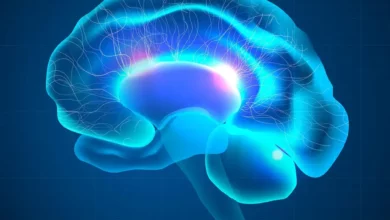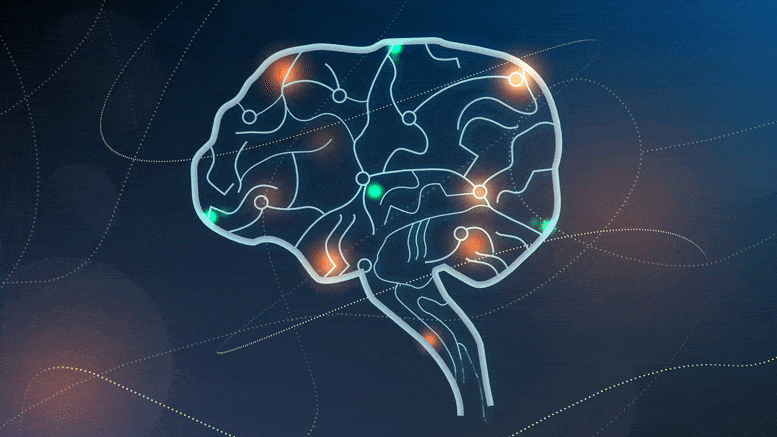
Lead Image: According to new research, subcutaneous fat, which is more common in females, is protective against brain inflammation.
Females’ propensity toward subcutaneous fat, which is fat stored under the skin, often in places like their hips, buttocks, and the backs of their arms, is protective against brain inflammation, at least until menopause. This is according to a new study by scientists at the Medical College of Georgia at Augusta University. It is important because brain inflammation can contribute to serious problems such as dementia and stroke.
Males of essentially any age, on the other hand, have a greater propensity to deposit fat around the major organs in their abdominal cavities. This is called visceral fat, or visceral adiposity adiposity, and is known to be far more inflammatory. And, before females reach menopause, males are considered at much higher risk for inflammation-related problems from heart attack to stroke.
“When people think about protection in women, their first thought is estrogen,” says Alexis M. Stranahan, PhD, neuroscientist in the Department of Neuroscience and Regenerative Medicine at the Medical College of Georgia at Augusta University. “But we need to get beyond the kind of simplistic idea that every sex difference involves hormone differences and hormone exposure. We need to really think more deeply about the underlying mechanisms for sex differences so that we can treat them and acknowledge the role that sex plays in different clinical outcomes.”
Diet and genetics are other likely factors that explain the differences broadly assigned to estrogen, says Stranahan, corresponding author of a study that was recently published in the American Diabetes Association journal Diabetes.
Watch this video where males and female mice gain weight on a high-fat diet. While at some point females can have the same amount of visceral fat as males, there is still less inflammation. Credit: Alexis Stranahan, Medical College of Georgia
Stranahan acknowledges that the findings are potentially heretical and revolutionary and certainly surprising even to her. “We did these experiments to try and nail down, first of all, what happens first, the hormone perturbation, the inflammation, or the brain changes.”
To learn more about how the brain becomes inflamed, the researchers scrutinized increases in the amount and location of fat tissue as well as levels of sex hormones and brain inflammation in male and female mice at different time intervals as they grew fatter on a high-fat diet.
Since, much like with people, obese female mice tend to have more subcutaneous fat and less visceral fat than male mice, they reasoned that the distinctive fat patterns might be a key reason for the protection from inflammation the females enjoy before menopause.
In response to a high-fat diet, the investigators again found the distinctive patterns of fat distribution in males and females. They found no indicators of brain inflammation or insulin resistance, which also increase inflammation and can lead to diabetes, until after the female mice reached menopause. At about 48 weeks, menstruation stops and fat positioning on the females starts to shift somewhat, to become more like males.
They then compared the impact of the high-fat diet, which is known to increase inflammation body-wide, in mice of both sexes following surgery, similar to liposuction, to remove subcutaneous fat. They did nothing to directly interfere with normal estrogen levels, like removing the ovaries.
The subcutaneous fat loss increased brain inflammation in females without changing the levels of their estrogen and other sex hormones.
Bottom line: The females’ brain inflammation looked much more like the males’, including increased levels of classic inflammation promoters like the signaling proteins IL-1β and TNF alpha in the brain, Stranahan and her colleagues report.

“When we took subcutaneous fat out of the equation, all of a sudden the females’ brains start to exhibit inflammation the way that male brains do, and the females gained more visceral fat,” Stranahan says. “It kind of shunted everything toward that other storage location.” The transition occurred over about three months, which translates to several years in human time.
By comparison, it was only after menopause, that the females who did not have subcutaneous fat removed but did eat a high-fat diet, showed brain inflammation levels similar to the males, Stranahan says.
When subcutaneous fat was removed from mice on a low-fat diet at an early age, they developed a little more visceral fat and a little more inflammation in the fat. But Stranahan and her colleagues saw no evidence of inflammation in the brain.
One take-home lesson from the work: Don’t get liposuction and then eat a high-fat diet, Stranahan says. Another is: BMI, which simply divides weight by height and is commonly used to indicate overweight, obesity, and consequently increased risk of a myriad of diseases, is likely not a very meaningful tool, she says. An also easy and more accurate indicator of both metabolic risk and potentially brain health, is the also easy-to-calculate waist-to-hip ratio, she adds.
“We can’t just say obesity. We have to start talking about where the fat is. That is the critical element here,” Stranahan says.
She notes that the new study looked specifically in the hippocampus and hypothalamus of the brain. The hypothalamus controls metabolism and exhibits changes with inflammation from obesity that help control conditions that develop bodywide as a result. The hippocampus, a center of learning and memory, is regulated by signals associated with those pathologies but doesn’t control them, Stranahan notes. While these are good places to start such explorations, other regions of the brain could respond very differently, so she is already looking at the impact of loss of subcutaneous fat in others. Also, since her evidence indicates estrogen may not explain the protection females have, Stranahan wants to better define what does. One of her suspects is the clear chromosomal differences between the XX female and the XY male.
Stranahan has been studying the impact of obesity on the brain for several years and is among the first scientists to show that visceral fat promotes brain inflammation in obese male mice, and, conversely, transplanting subcutaneous fat reduces their brain inflammation. Females also have naturally higher levels of proteins that can tamp down inflammation. It’s been shown that in males, but not females, microglia, immune cells in the brain, are activated by a high-fat diet.
She notes that some consider the reason that females have higher stores of subcutaneous fat is to enable sufficient energy stores for reproduction, and she is not challenging the relationship. But many questions remain like how much fat is needed to maintain fertility versus the level that will affect your metabolism, Stranahan says.
Reference: ” Sex Differences in Adipose Tissue Distribution Determine Susceptibility to Neuroinflammation in Mice With Dietary Obesity” by Alexis M. Stranahan, De-Huang Guo, Masaki Yamamoto, Caterina M. Hernandez, Hesam Khodadadi, Babak Baban, Wenbo Zhi, Yun Lei, Xinyun Lu, Kehong Ding and Carlos M. Isales, 11 November 2022, Diabetes.
DOI: 10.2337/db22-0192
The research was supported by the National Institutes of Health (NIH).





